Trekking into Biodiversity
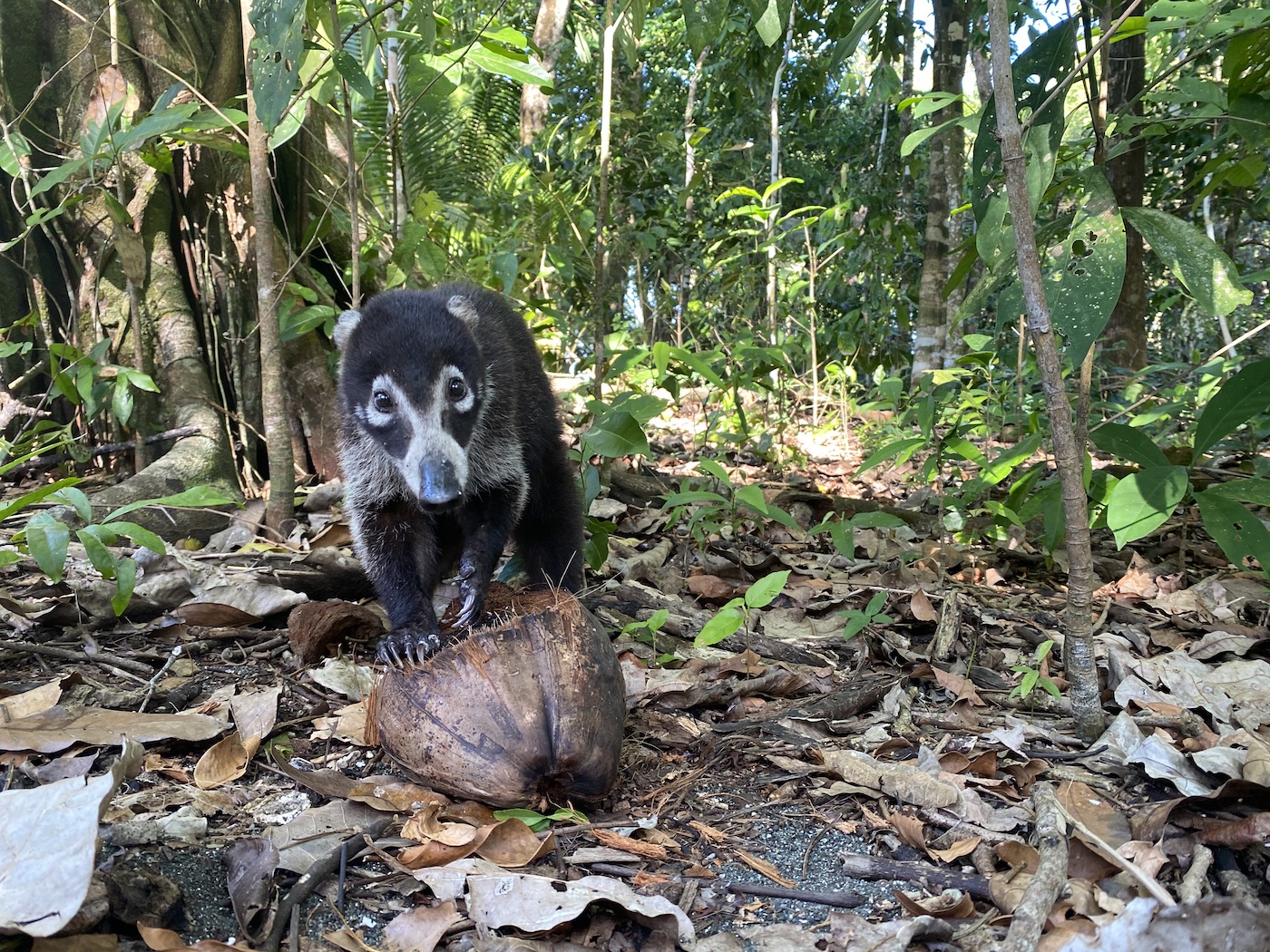
It wasn’t rain falling in the rainforest of the Corcovado National Park, located on the Osa Peninsula of Costa Rica, but it was raining leaves, bushels of them floating beneath the canopy that was so dense it blocked out the sun. The wind wasn’t blowing, yet the leaves continued to fall. Instead, there was a lot of thrashing going on above in the trees.
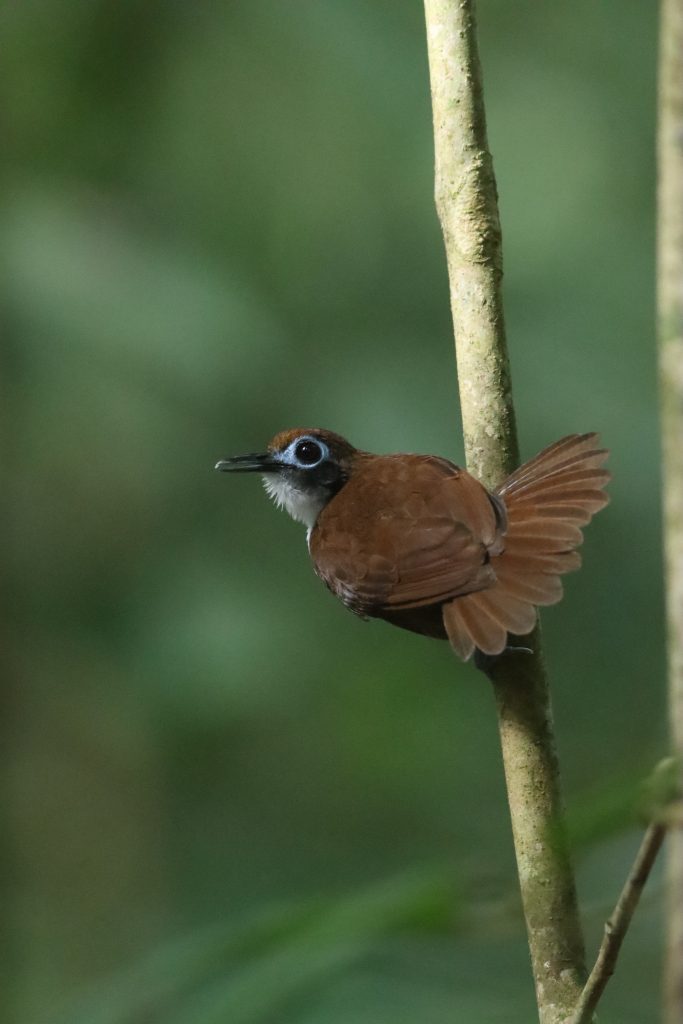
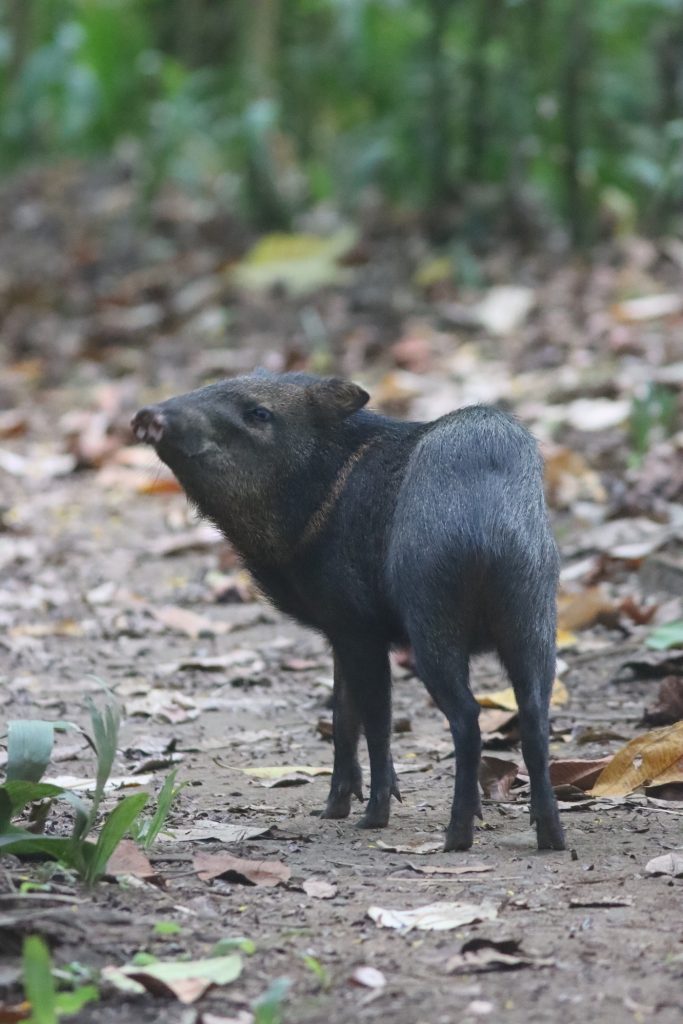
All that ruckus in the towering sabre and cashew trees was a thoroughly determined northern tamandua, also known as a collared anteater. They are nearly blind but equipped with thick, long claws, a 16-inch-long tongue and a powerful tail to wrap around tree trunks and branches to stabilize themselves. This enables these tree-climbing anteaters to extract ants and termites from cavities in precarious positions throughout the rainforest.
Marine biologist Holly Lohuis and I were in the middle of a four-day trek through the Corcovado, a region of the Osa Peninsula that National Geographic states “is the most biologically intense place on earth.” Within the first few miles of our trek, the Corcovado was living up to its reputation. We wanted to see as many species as we could within those four days, so my binoculars and camera gear were affixed to me, always at the ready.
Up and down the tamandua climbed, stirring up other fauna, birdlife, and insects concealed in the rainforest, most of which we would have never seen without a guide. Marco Umana had been guiding in Costa Rica for five years. An avid birder with a keen eye, Umana has seen 725 of Costa Rica’s 935 bird species and has even accomplished a “Big Year,” which means spotting as many species as one can in one country in 365 days. In Umana’s case he nailed down 649 species in 2017. That’s a lot of feathers and sounds to detect hidden in the rainforests of Costa Rica.
Minimal Impact
Corcovado became a national park on October 24, 1975 and is the largest park in Costa Rica. It covers 164 square miles within the largest primary rainforest on the American Pacific coastline, but it also includes one of the last remaining areas of notable lowland tropical forests on the planet.
To access the heart of the Corcovado National Park, all visitors are required to be accompanied by a guide. There’s no wiggle room there, but it’s to anyone’s benefit. The guides are incredible, enthusiastic, and extremely knowledgeable. Holly and I guesstimated that we would’ve only seen 10 percent of all the wildlife we encountered if we had been on our own.
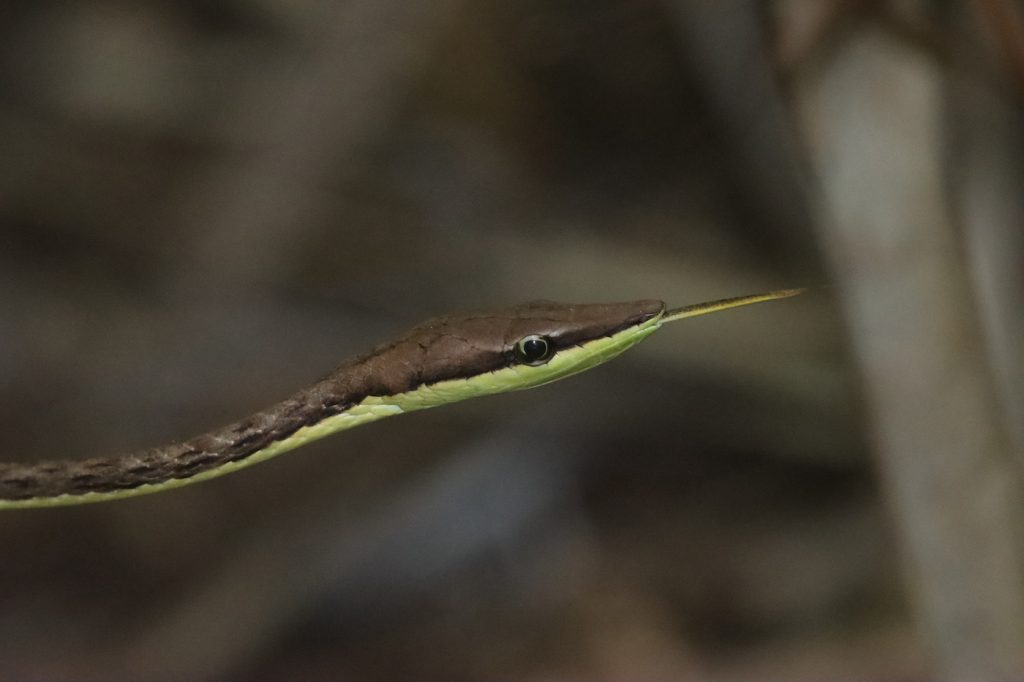
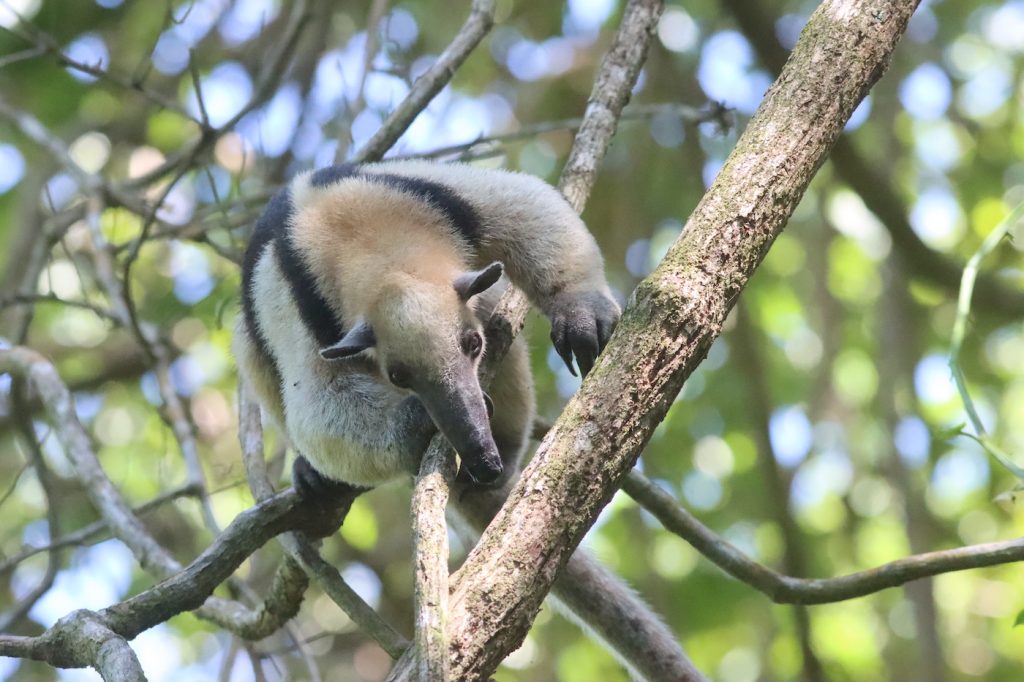
The Corcovado does not allow camping. Trekking is from ranger station to ranger station where everyone sleeps in bunk beds, beneath mosquito netting on raised platforms. Meals are included. Visitors don’t go hungry in the Corcovado. They don’t want anyone cooking within the park, so all meals are at the ranger stations.
Holly and I began our trek in the northern sector of the Corcovado at the Los Patos Ranger Station and trekked 13 miles in the mud, while crossing several rivers to the Sirena Ranger Station. This is the main hub of the Corcovado. Depending how long visitors stay at Sirena, days are filled with several guided hikes. Guides are armed with guidebooks, spotting scopes, binoculars and the e-bird app as they work extremely hard to locate the rich flora and fauna of the Corcovado.
Water is Life
Jesus Christ walks on water, but we didn’t know he could drop from a tree or a rock and cover five feet per second across its surface. Actually, the green basilisk lizards are lightening quick and run upright. When it feels threatened it can sprint across the water with relative ease, hence its status as the Jesus Christ lizard. It seems appropriate though, moving across water at biblical proportions. Its unique capability coming in handy while eluding predators in the steamy Central American rainforest of Costa Rica’s Corcovado National Park.
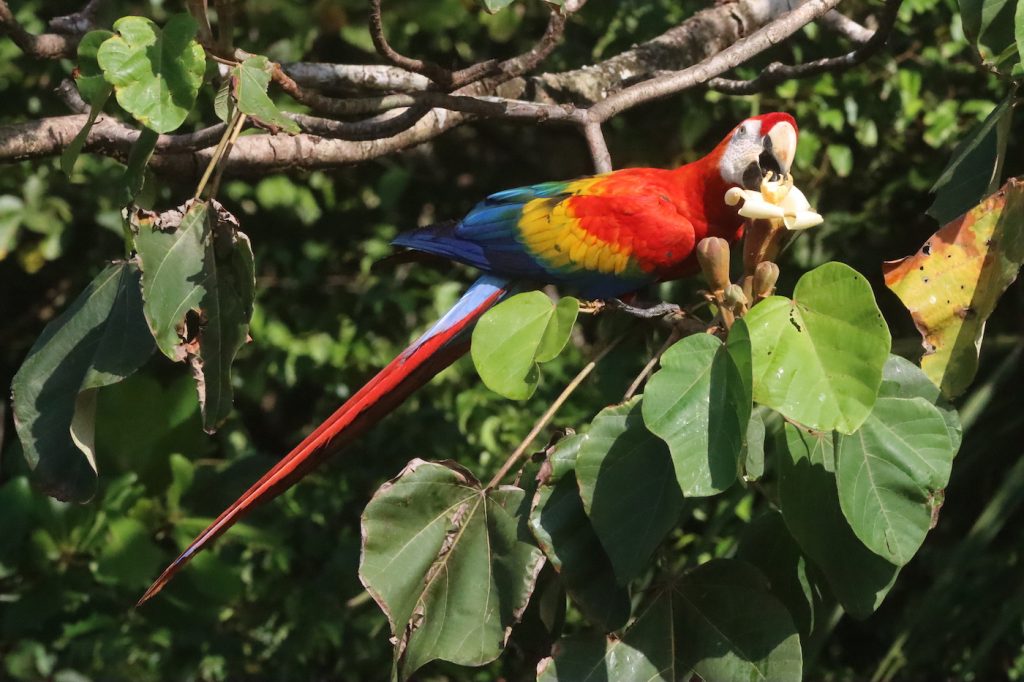
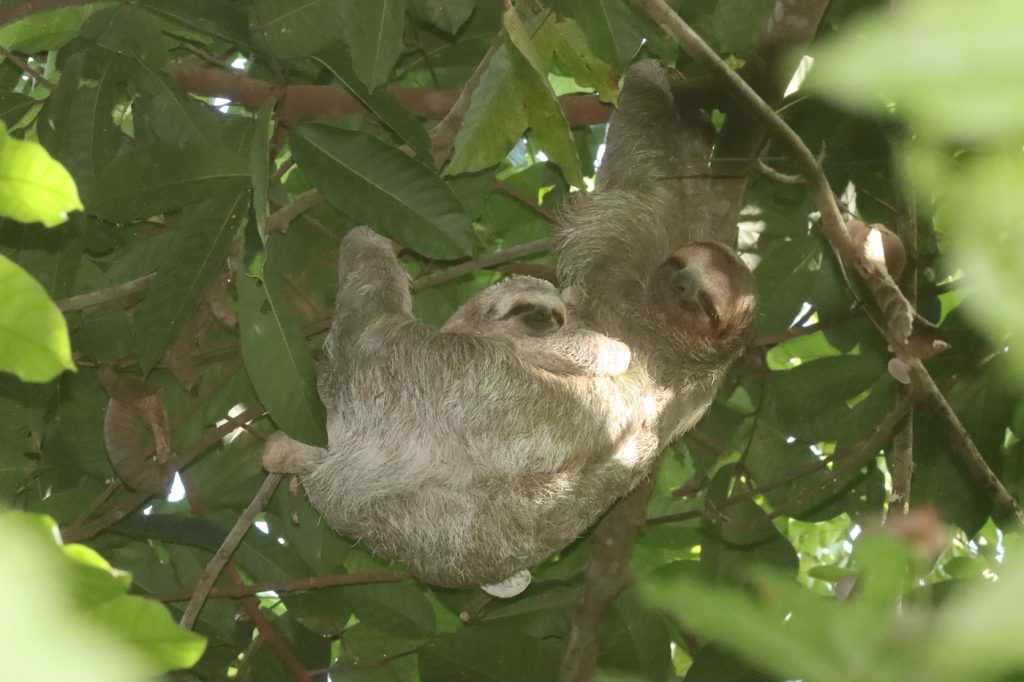
Whenever we were around a water source, we were virtually guaranteed of seeing these sleek, two-foot-long reptiles sprinting upstream, bank to bank, along serpentine streams and rivers that were also occupied by black-mandibled toucans, spectacled caimans, American crocodiles, and tiger herons.
At one particularly broad river mouth, in the fork of a dead tree, I watched a common black hawk successfully dismantle a large, freshwater crab. Patiently waiting below was a crested caracara (another type of raptor) scarfing up the remains. Nothing goes to waste in the rainforest.
Above the birds of prey was a breeding pair of scarlet macaws enjoying the blossoms in a huge cashew tree. They would first drink the water caught inside the blossoms and then consume the blossoms themselves. These neotropical parrots light up the canopy of the rainforest like no other bird with their stunning plumage of multi-colored feathers. That and their raucous RAAAK, RAAAK, resembling what a prehistoric pterodactyl may have sounded like millions of years prior. They can live up to 75 years and the Corcovado National Park is an important bastion for this iconic species.
No Sunscreen Required
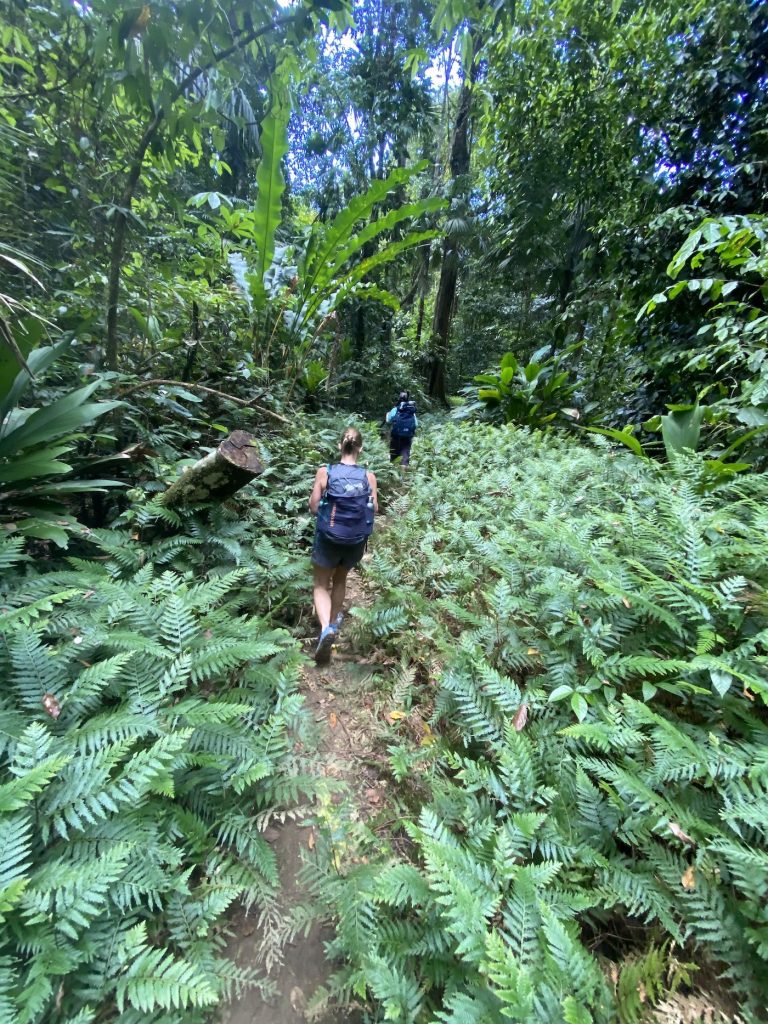
There was one more massive river mouth to cross before leaving the Corcovado, reaching Carate and catching our ride back to Puerto Jimenez.
This was our last stretch of the Corcovado, a short two-mile hike that didn’t disappoint. Holly nearly stepped on a well-concealed brown vine snake. We were snorted at by a couple of white-collared peccaries and watched a band of coatis ripping through a stand of banana trees.
It occurred to me that I hadn’t used sunscreen the entire four days. Didn’t need to. The always shady rainforest took care of that. I was sorely reminded of it in Carate when we emerged from the rainforest and into the blistering sun.
I quickly forgot about the heat and humidity, diverted by a pair of breeding scarlet macaws just underneath the canopy of a lone cashew tree. Not paying any attention to a minimal audience, the two lovebirds went on with their business while I enjoyed an ice cold Coca-Cola in a bottle.
Info: Pacific Trade Winds for general information, www.entercostarica.com. Osa Wild for guided trips into Corcovado National Park, osawild.travel.







